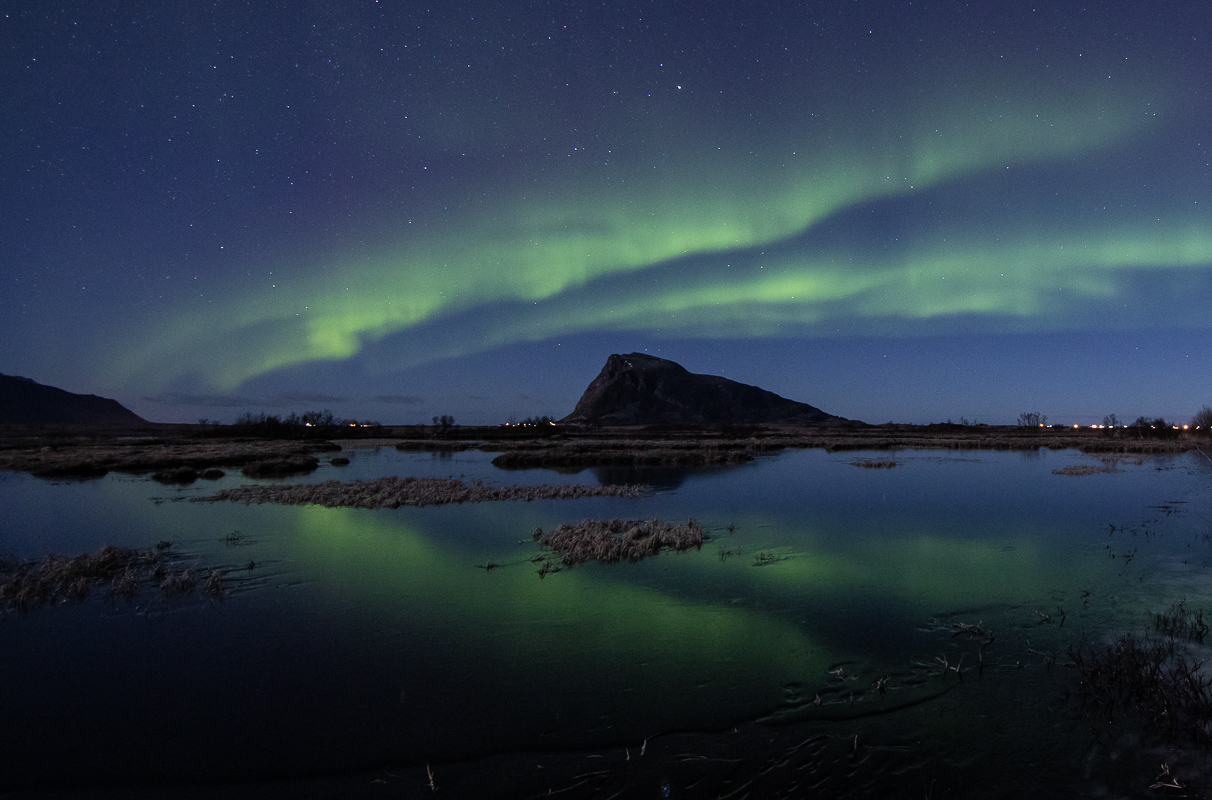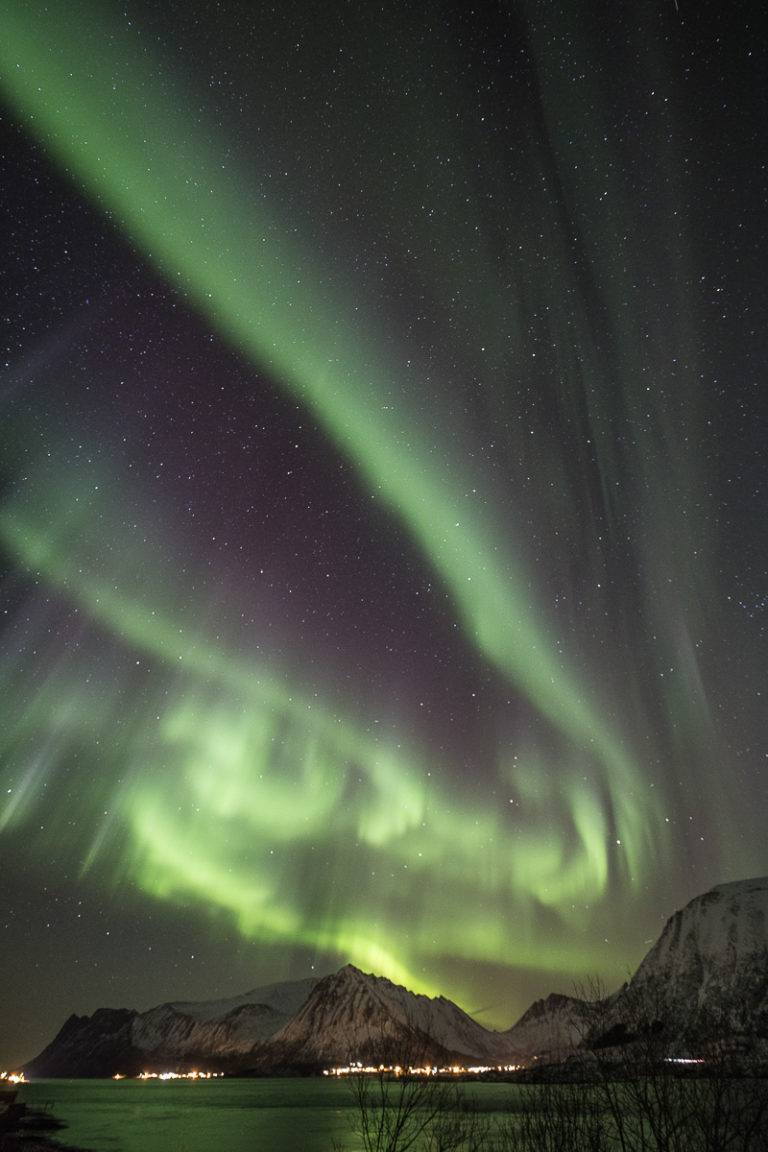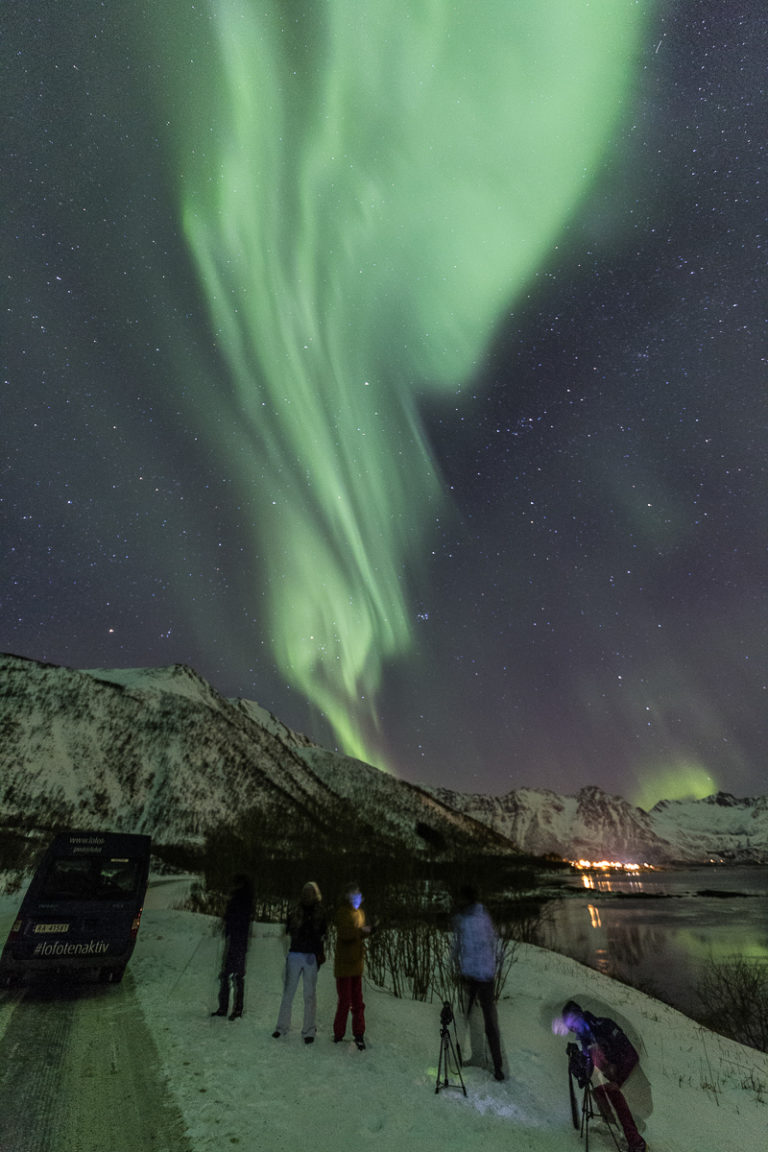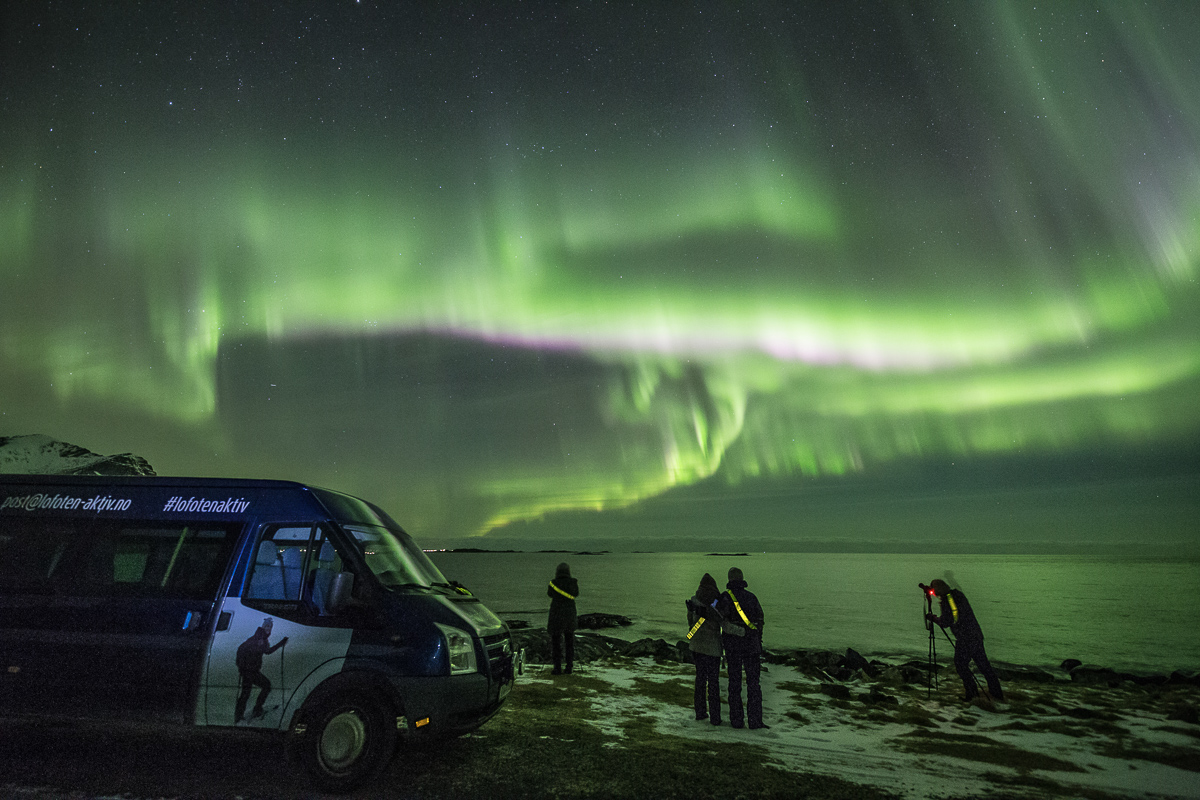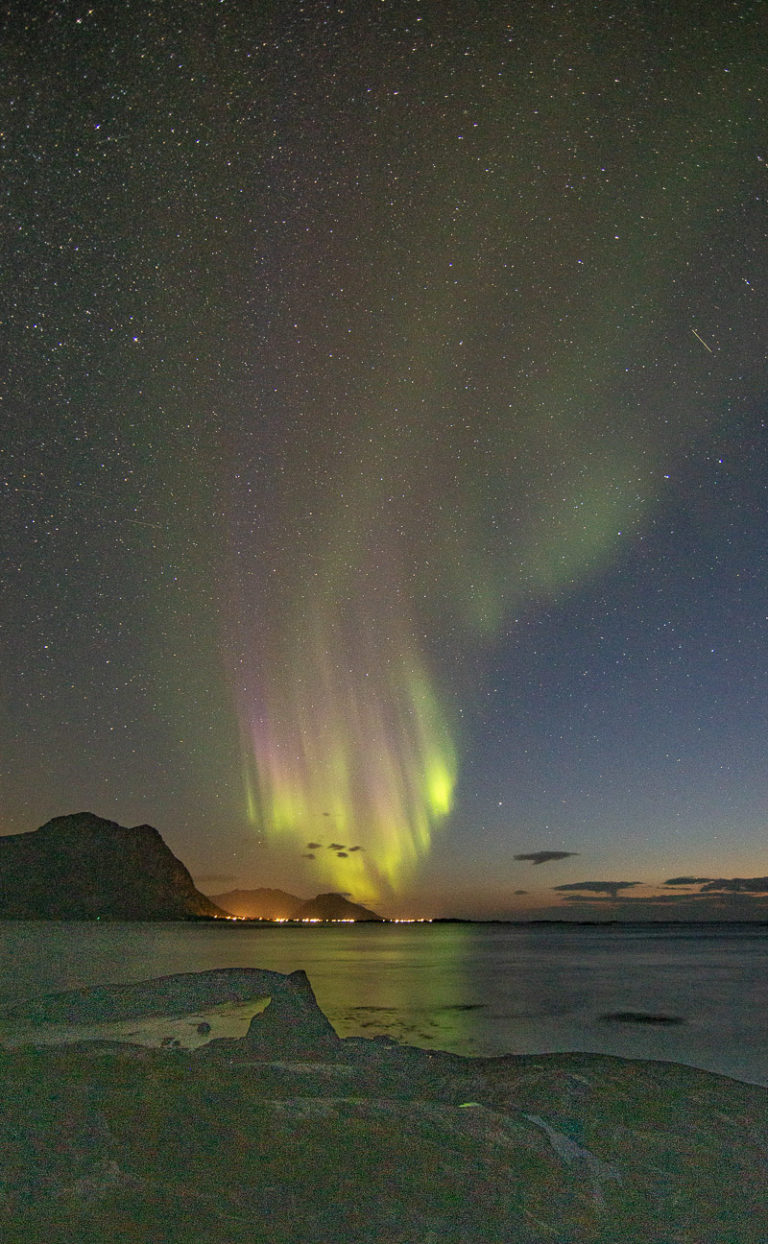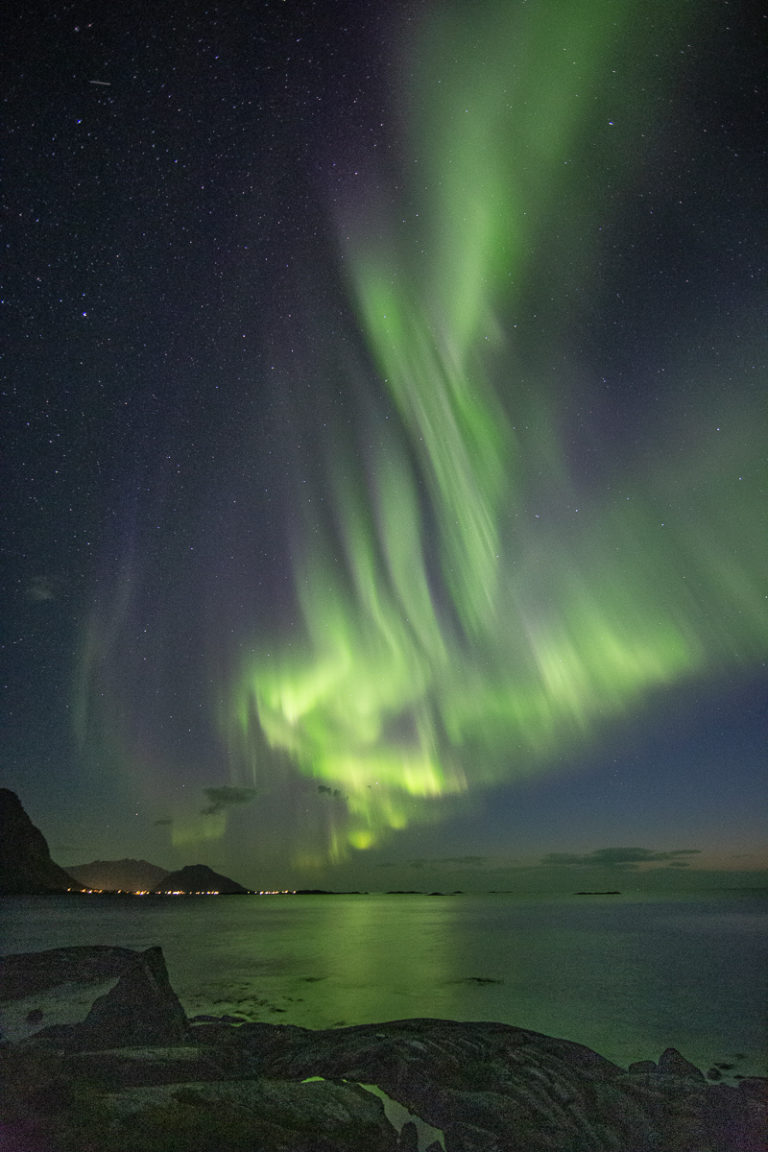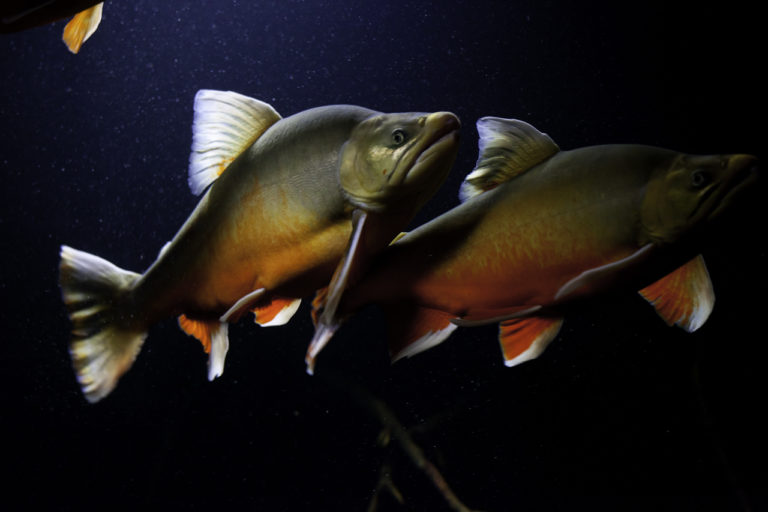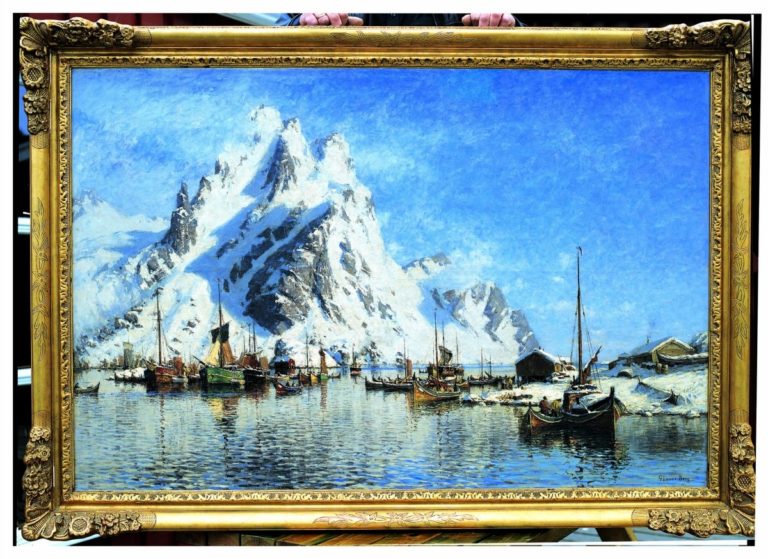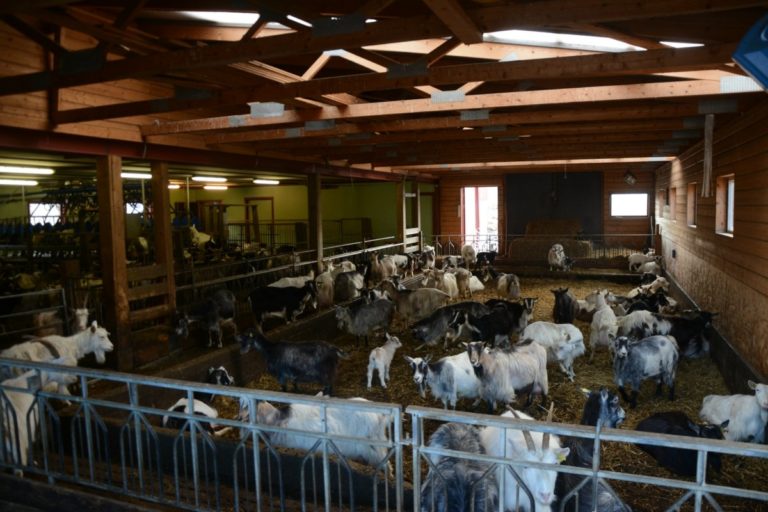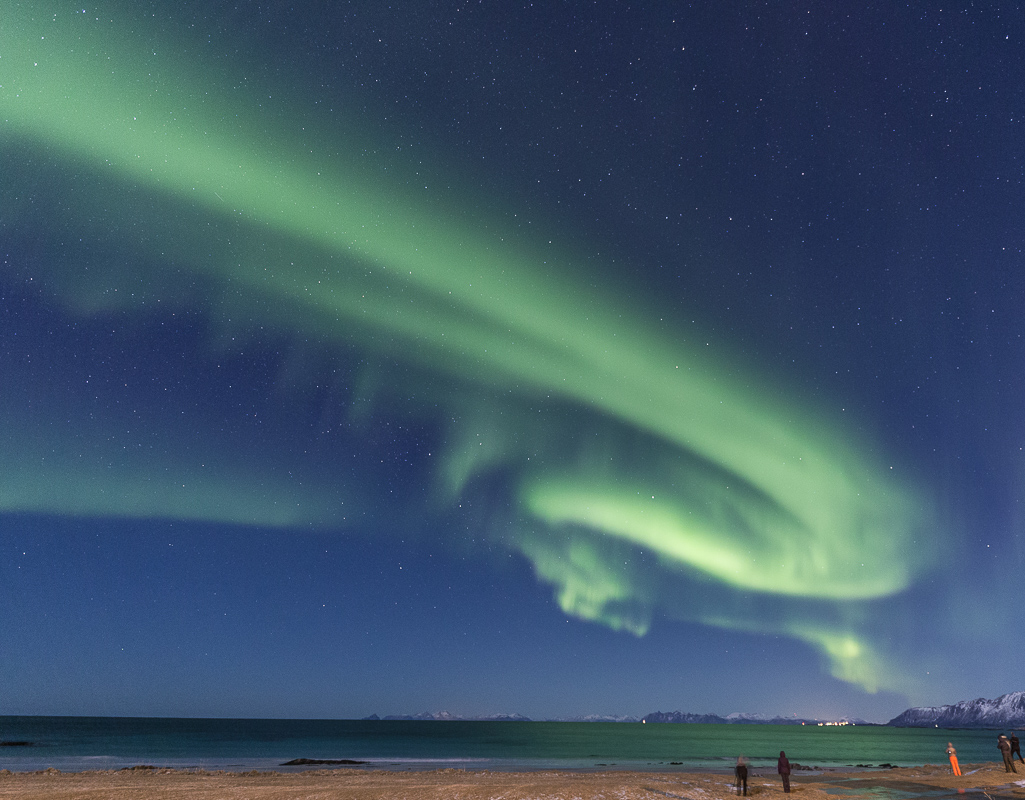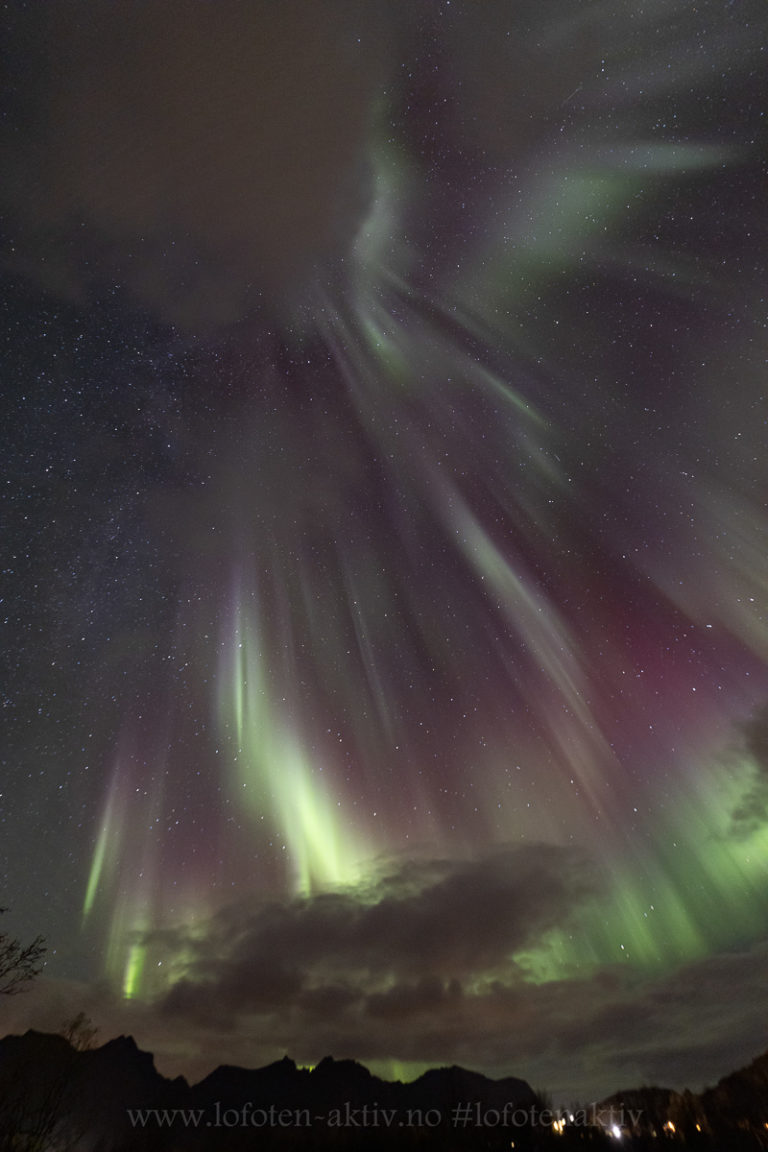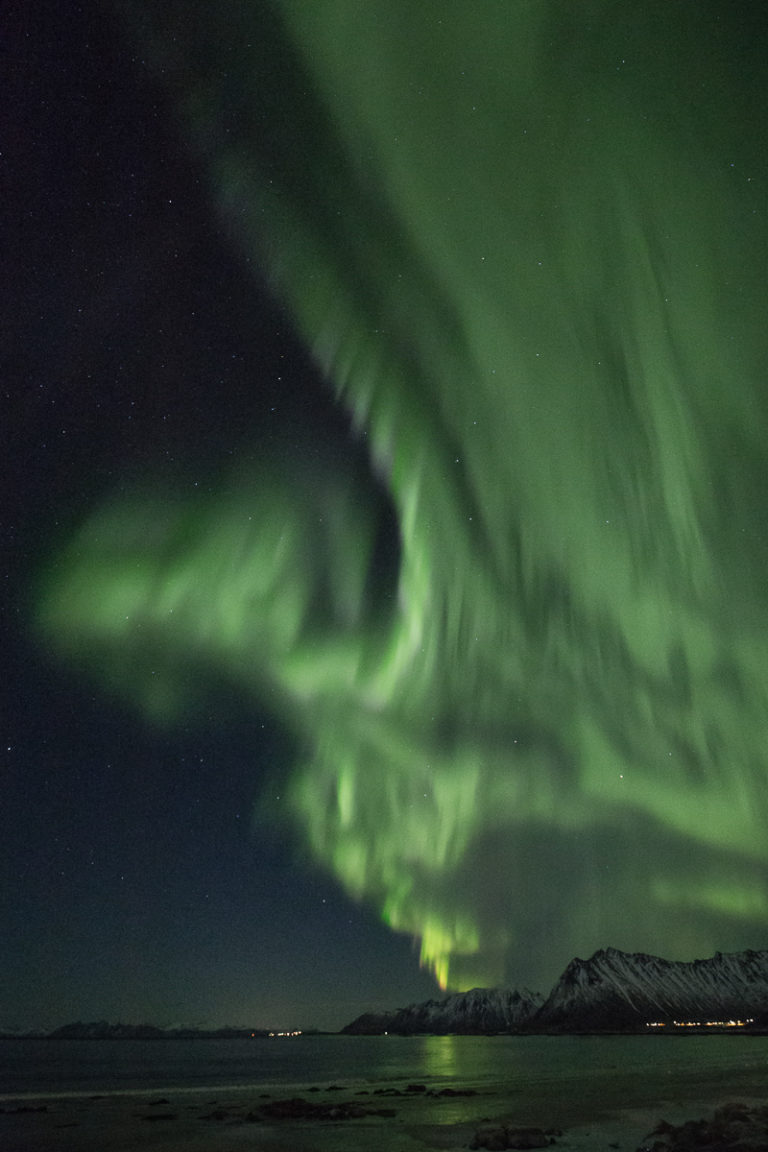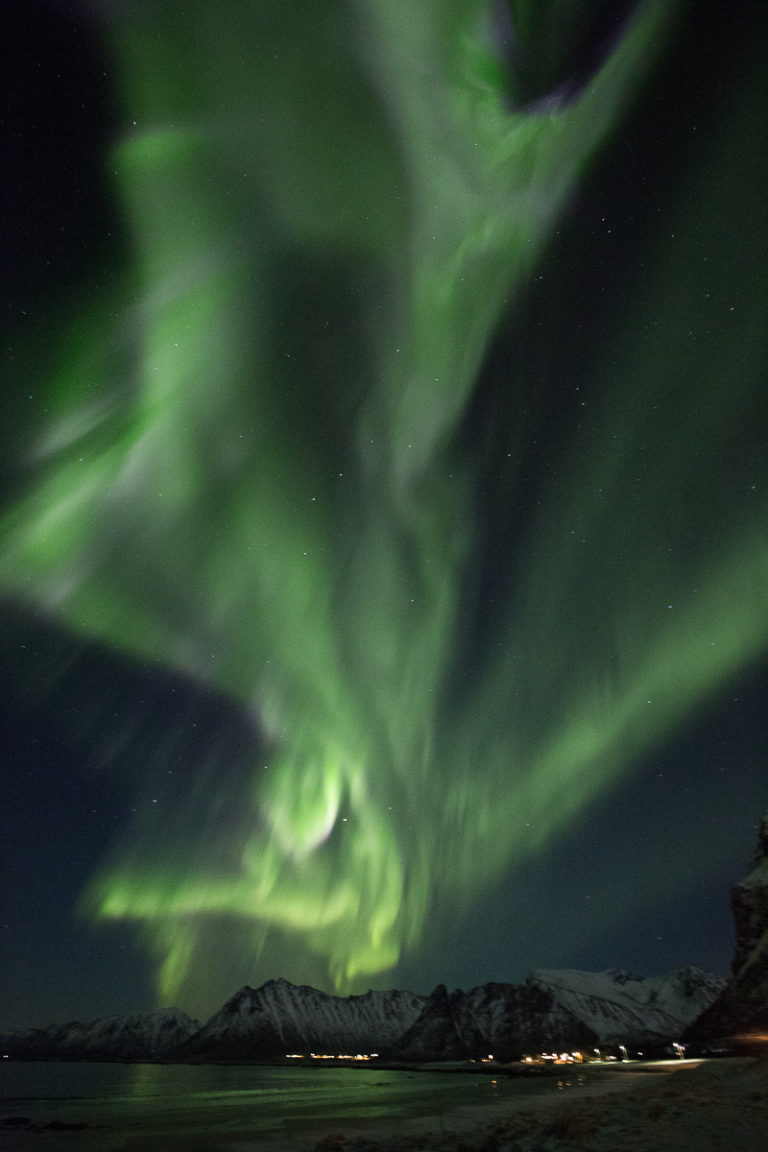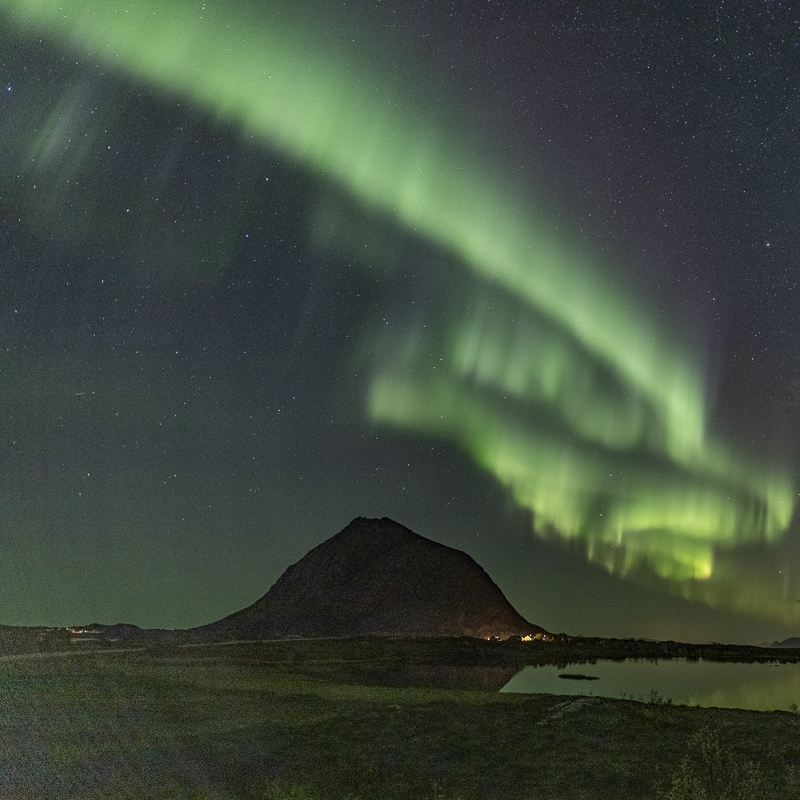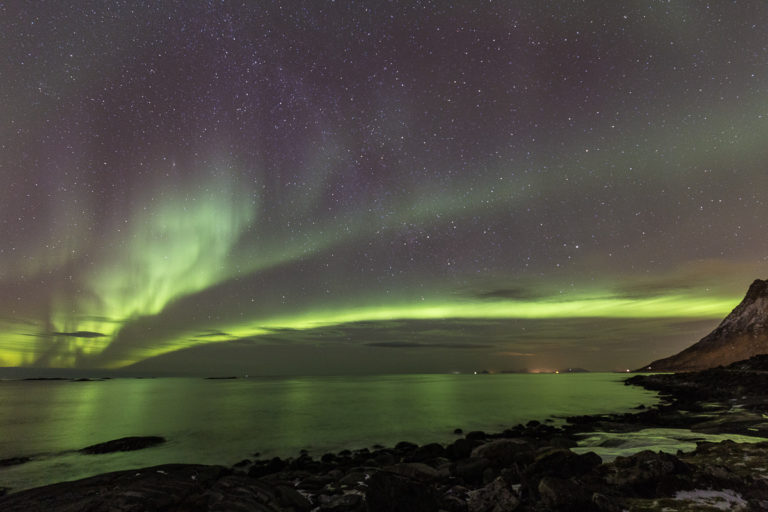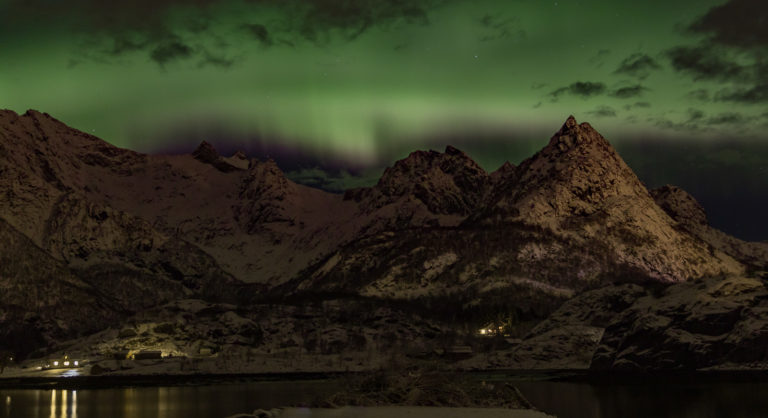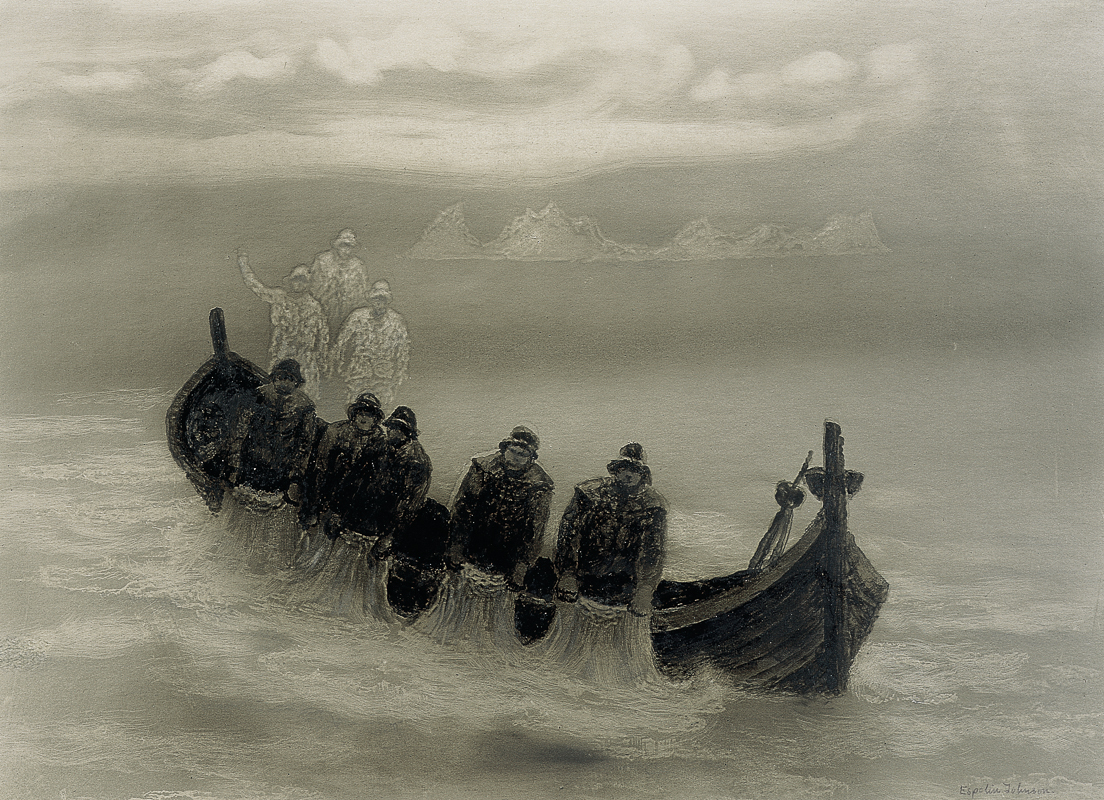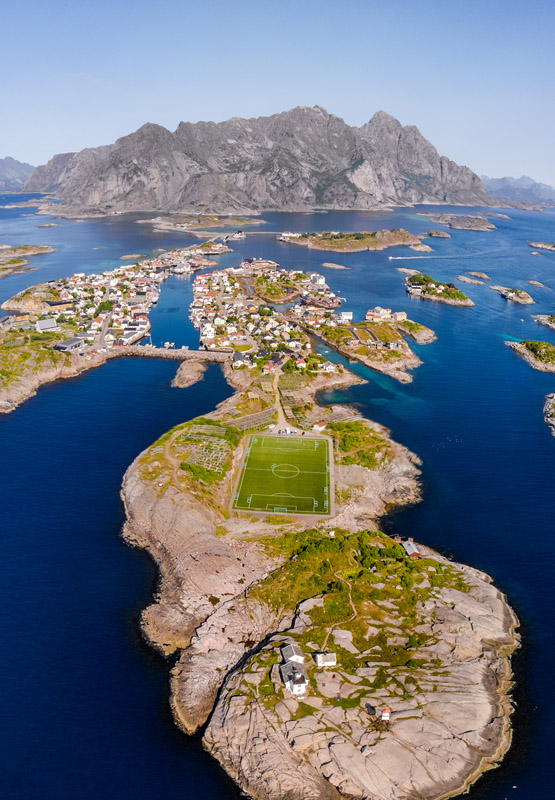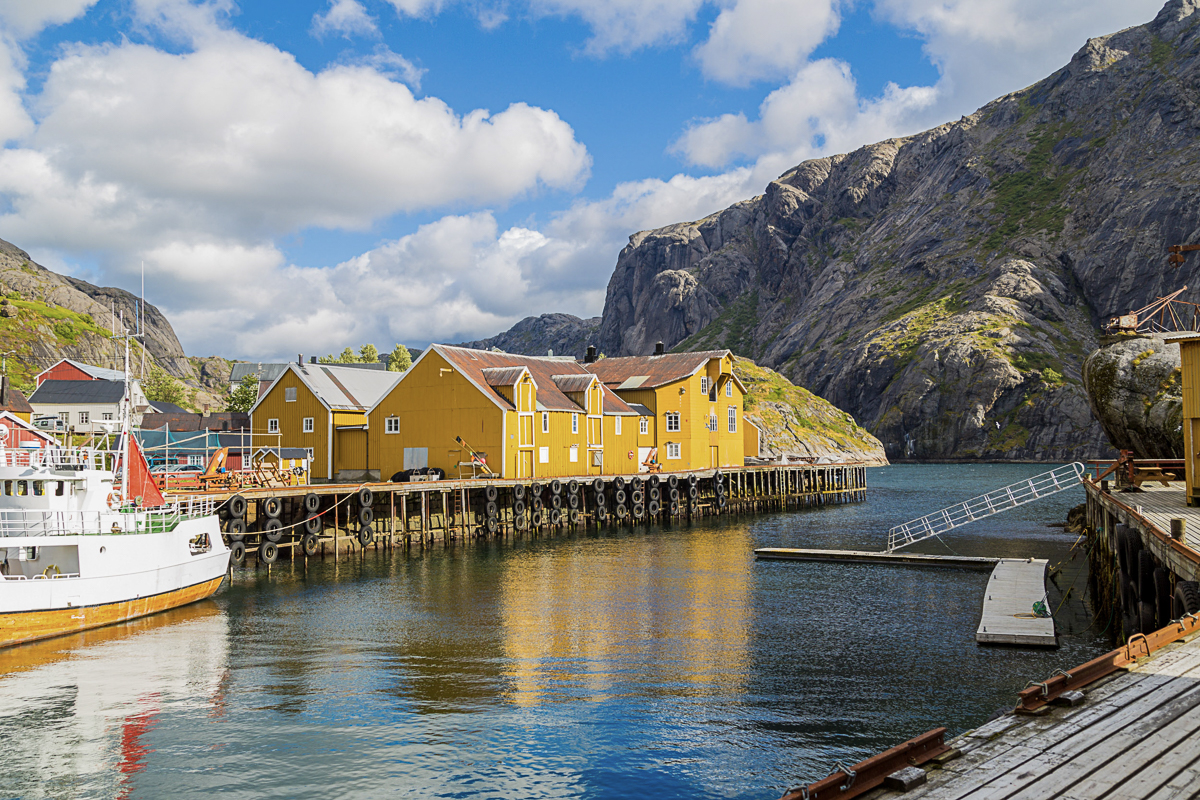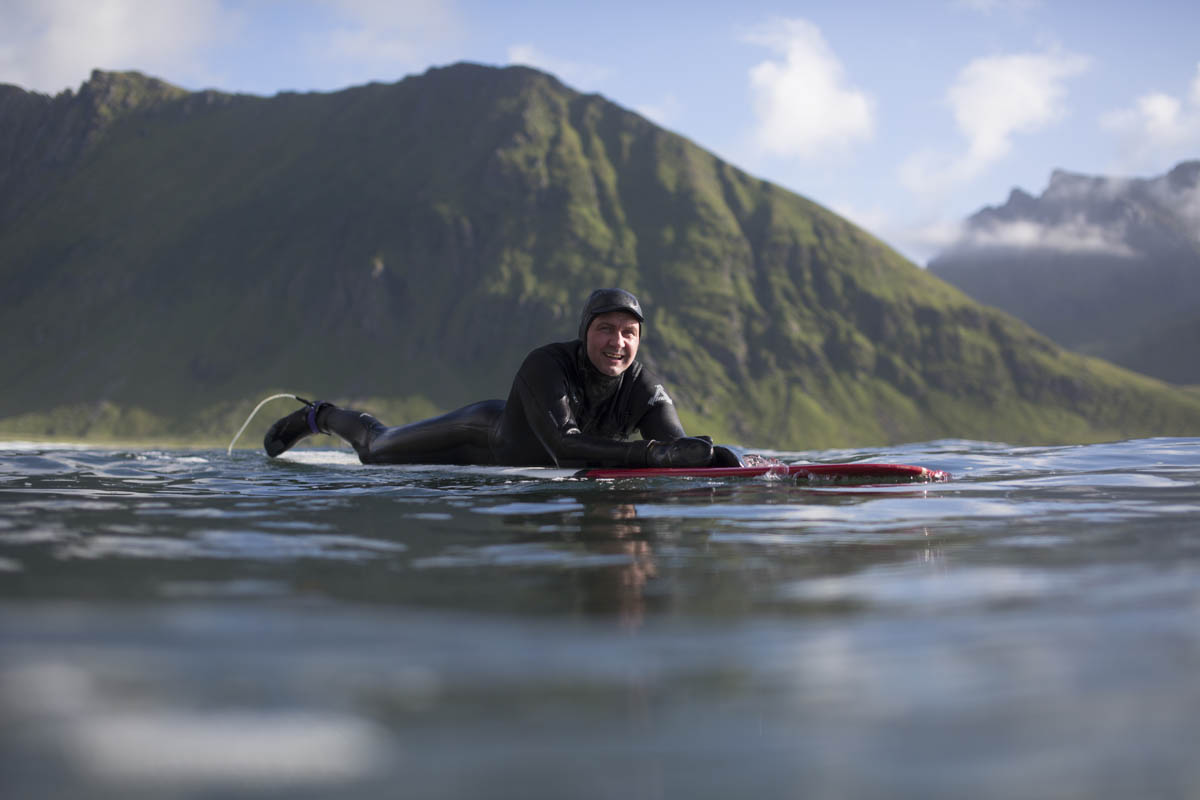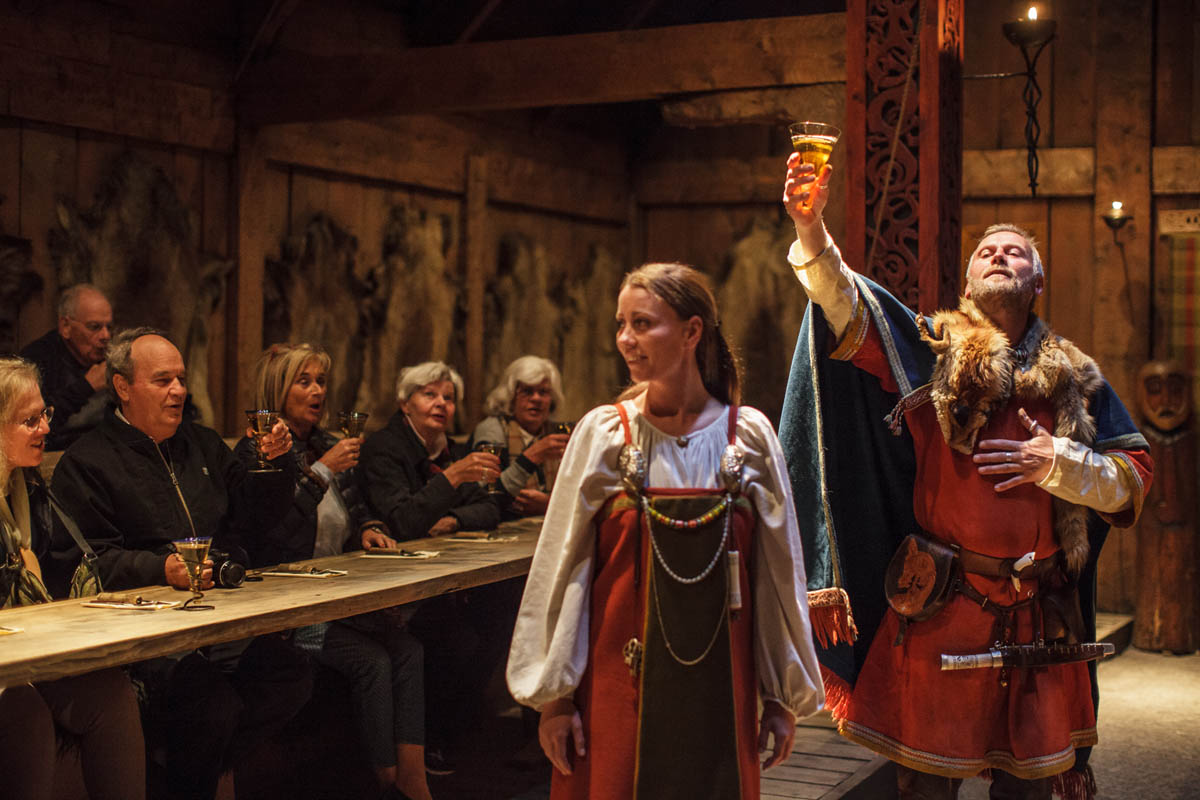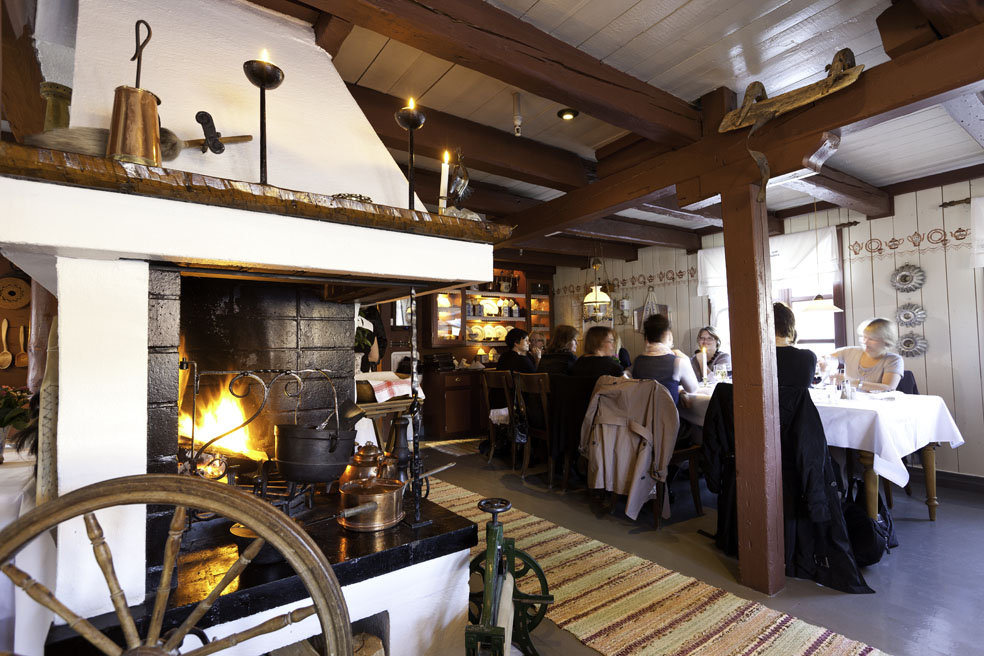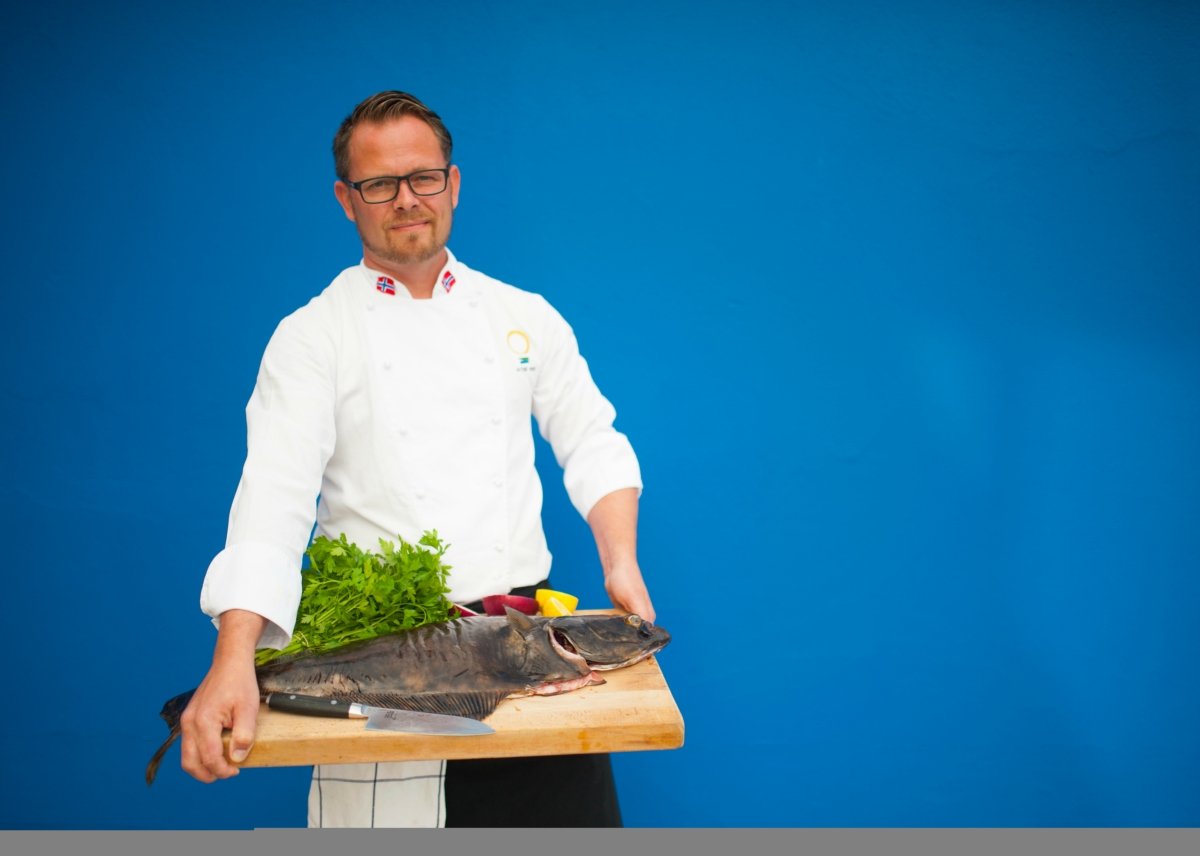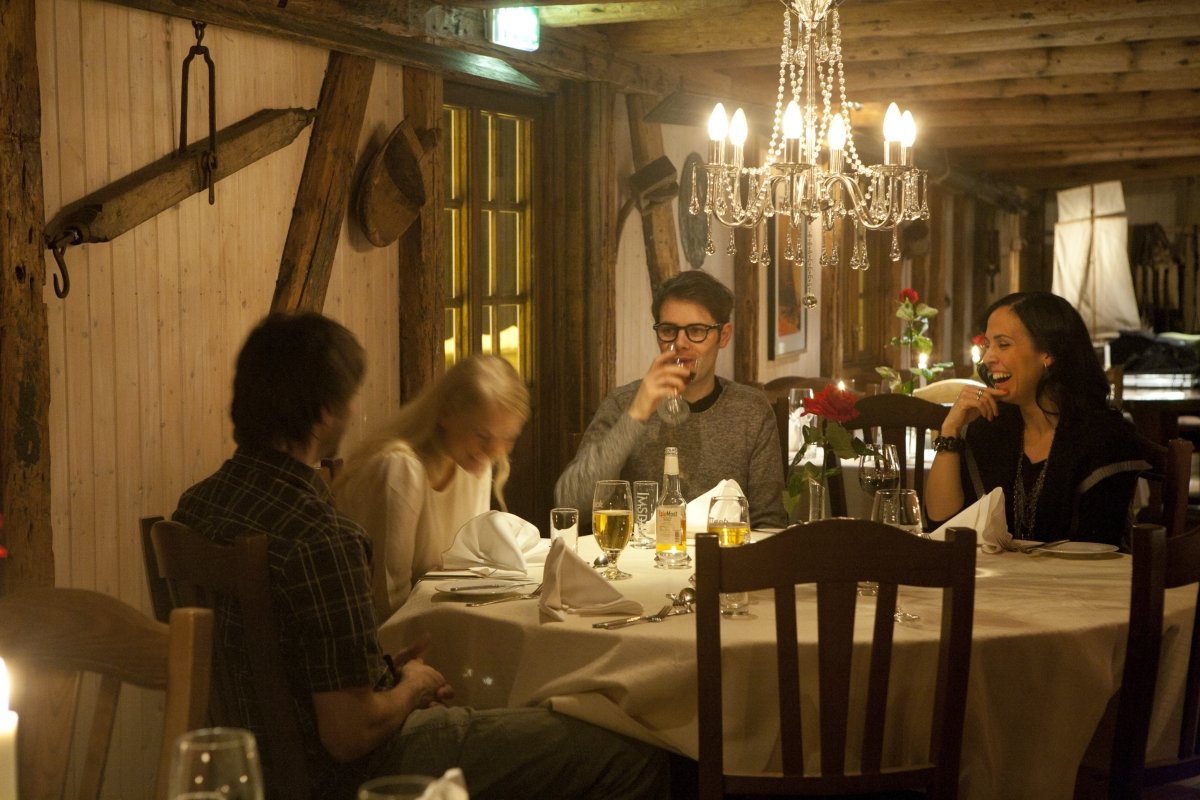The Lofoten Islands are among the mildest locations under the Northern Lights oval, the zone with maximum chances of spotting the aurora borealis. This means you don’t freeze so much, but the chances of clear skies of course vary in an archipelago found smack in the middle of the preferred lane for the Atlantic lows. But to remedy that, one should get in touch with a network of small guide companies. They turn the weather into an advantage and show impressive results in finding Northern Lights. The best is they find it without driving all night in the dark.
Jann knows Lofoten from the ocean to the mountain tops
We had a chat with Jann Engstad in Lofoten Active, who works from Kabelvåg near Svolvær, the Lofoten capital. He is a seasoned tourist guide, organising bike trips, kayaking, snowshoeing and Northern Lights hunts, all taking advantage of the breath-taking Lofoten landscape. The last years, his winters have been dominated by Northern Lights. “We had them before too” he says, “we just didn’t think so much about them”. But after a few winters he’s well familiar with kp-indexes, solar storms and holes in the corona. His absolute best quality, though, is his ability to find clear skies even on a difficult night.
Do you get clear skies in the middle of the Golf Stream?
The Lofoten weather is among the mildest and wettest in the whole of the Aurora zone. From a satellite, the archipelago looks like an arm reeling in the mild rainclouds. Clear skies are required to see the light, but do they show up only once in a blue moon? Hang on; the topography of Lofoten is a challenge for every low pressure. In the east, mountains of more than 1100 metres resist the onslaught of wind, snow and rain, creating pockets of clear skies that seem impossible with snow-mixed rain whipping your face a few kilometres away.
The weather chart is intensely studied
Sometimes clouds laden with mild wetness follow the Gulf Stream up. Or dense snow showers rage in from the north-west. None of them intimidate Jann, who after several winter seasons has had many positive surprises following deplorable weather forecasts. Phone calls are being made to friends in strategic places, and discussions run high in his little office. The final decision on location is made last minute, though, it’s all about flexibility. Let’s call it a good guess. Albeit a more and more qualified one.
The success rate is surprisingly high
I ask Jann; “shouldn’t one find some dry inland area to chase the lights instead of going to Lofoten”. Jann counters with facts and figures. “The last complete season we had” he says, meaning the 2018-19 season “we found at least a stripe of Northern Lights 122 times out of the 129 times we set out. 9 trips were cancelled short term”. The impressive Northern Lights rate is cause by the ever-improving skills in reading weather charts and the crazy topography of his home island.
Are you afraid of long hours in the dark?
Jann, along with several other Lofoten Northern Lights guides, has a different approach to Northern Lights chase than in other Northern Lights destinations in the north. He doesn’t believe in endlessly long chases. Instead he concentrates his activity on the island on Austvågøy, the easternmost of the large islands in Lofoten, with only small forays across the next bridge. It’s all done in 3,5 to 4 hours, but those are exactly the hours Lofoten is found under the Aurora oval.
Shorter distances make it a little bit more sustainable
“I try not to drive more than max 40 minutes” Jann says. This means he uses less petrol and releases less into the atmosphere. Jann is reluctant to label his tours sustainable “just coming here is not sustainable” he says in his straightforward way, “but it helps a little bit to reduce emissions to drive less. Anyway, driving around for hours would drive both me and my guests mad”. When his long-time experience tells him the prospects are slim, he simply cancels with a full refund. Or invite people in for the next evening.
Jann has some favourite spots
Jan shares a few of his secrets with us. One of his favourite spots is at Hanøy, at the northeastern tip of Austvågøya Island. Here, only a few lights from faraway settlements around the Hadselfjord, looking like pearl necklaces along the sea, compete with the stars. The island of Gimsøy has more lights nearby, but the views to the sky both north and south of the island chain can provide fabulous displays. When he can find a place to park safely along the narrow road out to Henningsvær village, the guests can see Aurora dance over the peaks of the entire wester part of the archipelago.
It all starts with a briefing
One doesn’t just set off on a Northern Lights chase. “We start with a 15-20 minutes’ briefing”, Jann says “I inform about the weather situation, and help the guests set their cameras”. Sometimes, expectations can be low if there is snow-mixed rain and generally bad weather. “Then I tell them that things often are different around the next mountain”.
Why do we have Northern Lights?
Small companies work together for a common good
Jann is not the only Northern Lights guide in Lofoten. He is part of a small network of independent Northern Lights companies. On a difficult night, they discuss the various possible locations by sms or on the phone. Three guides may then go to three different locations. If two of them don’t see anything, and the third can see stars appearing as the cloud cover is breaking up, a quick sms is sent, and the two others relocate. “Then we are 3 9-seat buses on a 400 metre stretch” Jann says “We don’t disturb each other and all get to see the lights”. Tips are shared, and everybody gets a little more skilful all the time. To the benefit of the guests.
In the middle of the Gulf Stream, winter nights are mild
The average temperature in eastern Lofoten in January-February is -2 C. “Some people come with expedition-like gear” Jann says “and they positively boil”. The key is to dress flexibly, woollen long johns and maybe a woollen shirt close to your body, then a layer of normal all-year outdoor gear. Have a good jacket on the ready, along with a hat and gloves in a little backpack. Also wear sensible shoes.
Sign up for a tour the first evening in Lofoten
Most people spend several days in the beautiful archipelago of Lofoten. Jann then urges his guests to book the Northern Lights tour as the first thing they do. If Jann, after some in-depth studies of the weather chart, decides to call off the tour, one can go the next day. Simply let Aurora decide your programme, this diva on the night sky expects nothing less. Then have fun around these fabled islands at daytime.
Jann takes you out at sea and into the mountains in daylight
One of the great advantages of going on the shorter tours in Lofoten is that you’re not completely exhausted the rest of the time. “We often meet our guests again for kayaking or snowshoeing at 10am” Jann says laughingly. Kayaking inside the Arctic circle may sound very daring, but the bay just outside Jann’s camp is sheltered by rocky islands and looks like a mountain lake most of the time. A tour here is suited for the absolute beginner. Tougher tours are also on offer. Anyone who can walk, can also snowshoe. Unlike skiing, no previous training is required. Fit people of course book a full day hike up a 900-metre peak.
A long, mild autumn is perfect for Northern Lights chasing
The first Northern Lights in Lofoten can often be spotted in mid-August, typically competing with the sunset colours across the north-western sky. The numerous local photographers are delighted, as they can get photos out of the ordinary. However, first-time Northern Lights hunters from down below the Arctic circle should give it another month to maximise their chances. In September, a mild föhn can caress your cheek as you watch the Northern Lights, in October a frosty clear night requires a pair of gloves as your step crushes frozen rowan leaves asunder.
The Polar Night is the absolute low season
Few people make it to the Lofoten Islands in late November to early January. Lofoten goes through the Polar Night, the period when the sun dips below the, from the 7th of December to the 5th of January in Svolvær. Far from being all dark, this is a period of incredible, low light, dressing the steep, snowy mountainsides in peach and gold, and creating skies filled with every shade between silvery white and crimson. The snow cover is not guaranteed at snow level, but still the Christmas Market in Henningsvær is brimming with festive atmosphere.
The Lofoten Fisheries herald the return of the sun
In January, the Norwegian Arctic cod, following urges and instincts inherited through a thousand generations, make the journey to Lofoten to be intimate in the tepid waters between the islands. The atmosphere suddenly changes from serene quiet to bustling, as the sun returns, and winter snow gets a firmer grip. Fishing boats head out in the morning and deliver fish to the fish factories in the late afternoon. The Northern Lights, however, are easily spotted in the evening. After the first of April, however, the nights are eating into the best late-evening Aurora hours, and your chances diminish. By mid-April, the lights have capitulated unconditionally to the increasing daylight.
Autumn is a good aurora period
Stay active at daytime in Lofoten all through the Northern Lights season
In the early Aurora period, you can still hike in the mountains. Climbing Mount Festvågtind above Henningsvær or Mannen on the Northern coast of Vestvågøy can be fantastic on a crisp September day with the shrubbery and heather ablaze with autumn colours. As storms rage the Atlantic, surfers ride the famous left wave at Unstad on the exposed north-western shore. The iffy snow cover of the polar night may mean you can neither hike nor ski properly but kayaking in sheltered waters is still an option. As the light returns in February, ski tourers from across the globe rush down the perfect snow on Lofoten’s hillsides, lasting well beyond the end of the Aurora season.
Sightsee the islands all year
The summer holiday is of course the busiest time in Lofoten. Coming off season means you have the islands to yourself. The smith in Sund makes his elegant cast-iron cormorants all year, at Galleri Lofoten in Henningsvær you can step back and admire a 150 year old depiction of the Lofoten Fisheries without crashing with someone and maybe you’re the only one enjoying the tour of the stockfish museum at Å. The “midwinter sacrifice” celebration in the Viking house at Borg is an occasion not to be missed. The numerous fishing villages, small and charming museums, galleries and craft workshops are easy to explore completely off season.
Eat well before you go Northern Lights hunting
I once stumbled into the delicatessen cum restaurant Lofotmat in Henningsvær off season, and the friendly hostess said apologetically “I’m afraid we only have boknafesk” – that tasty dish made by semi-dry cod. I winked at her and said “jackpot”. No need to say I sticked around for an extra glass of wine after the meal. The night before, a friendly hostess at Gammelbua in Reine had cooked “today’s fish” – panfried cod while I looked out at the snowy, red rorbuer around. The restaurant scene in Lofoten has moved on from steak and chips (“Fish? We eat that at home every day!”). In January to April, it’s time for the most rustic of cod dishes, the “mølja”, a mix of cod, cod liver and cod roe, sometimes with added delicacies such as tongues and chins. More conventional, be it traditional northern, classical French or modern, is available throughout the archipelago.
Practical about Lofoten in winter
Lofoten is surprisingly mild for the latitude, the average temperature is above freezing on the outer most islands of Værøy and Røst, and just below freezing further north east. Cold spells from the inland can occasionally force the thermometer down to -10 in places, so be prepared for real winter.
Lofoten is found in the middle of the Golf Stream. This means that Lofoten is both mild and wet. Occasionally, a storm hits the islands, but if this represents a danger, warnings are out well ahead. Northwestern winds can bring heavy snowfall. Wind from the northeast and east bring cold, clear weather and good Northern Lights chances. As attested by this article, the weather is highly changeable around the archipelago. So even in the worst conditions, there might be clear skies behind the next mountain.
Lofoten is a very popular holiday destination in the Norwegian summer holiday, late June to mid August. However, the winter is undeservedly less know, and it should be easier to find a place to stay. Places might be closed over Christmas, and traffic does increase in the Norwegian winter holiday, a couple of weeks in February. It all comes down to booking ahead.
Lofoten has three airports for smaller aircraft, Svolvær (SVJ), Leknes (LKN) and the remote island of Røst (RET). Many people use the mainland city of Bodø (BOO) as a landing point. This is because Boeing 737’s can land here, meaning the access to discount tickets is far greater. From Bodø, you can take the legendary Hurtigruten every afternoon to Stamsund and Svolvær. There is also the “Nordland Express” – a catamaran boat running from Bodø to Svolvær every day.
Lofoten has an extensive bus system, reaching out from central locations like Leknes and Svolvær to even the smallest community. However, there is not a bus every five minutes, so study the timetables well.
Lofoten Info is the website of Destination Lofoten, the regional visitor’s organisation. Here you can find accommodation, dining, attractions and all the Northern Lights tours.
Jann’s company is Lofoten Aktiv. He does plenty more than just Northern Lights.
The Norwegian word Lofoten is a singular, derived from old Norse “Lófotr”, “the lynx foot”, maybe inspired by the ragged nature of Lofoten. This means one should say “Lofoten is..”, not “Lofoten are”. However, nobody is offended if you mix things up a bit.
